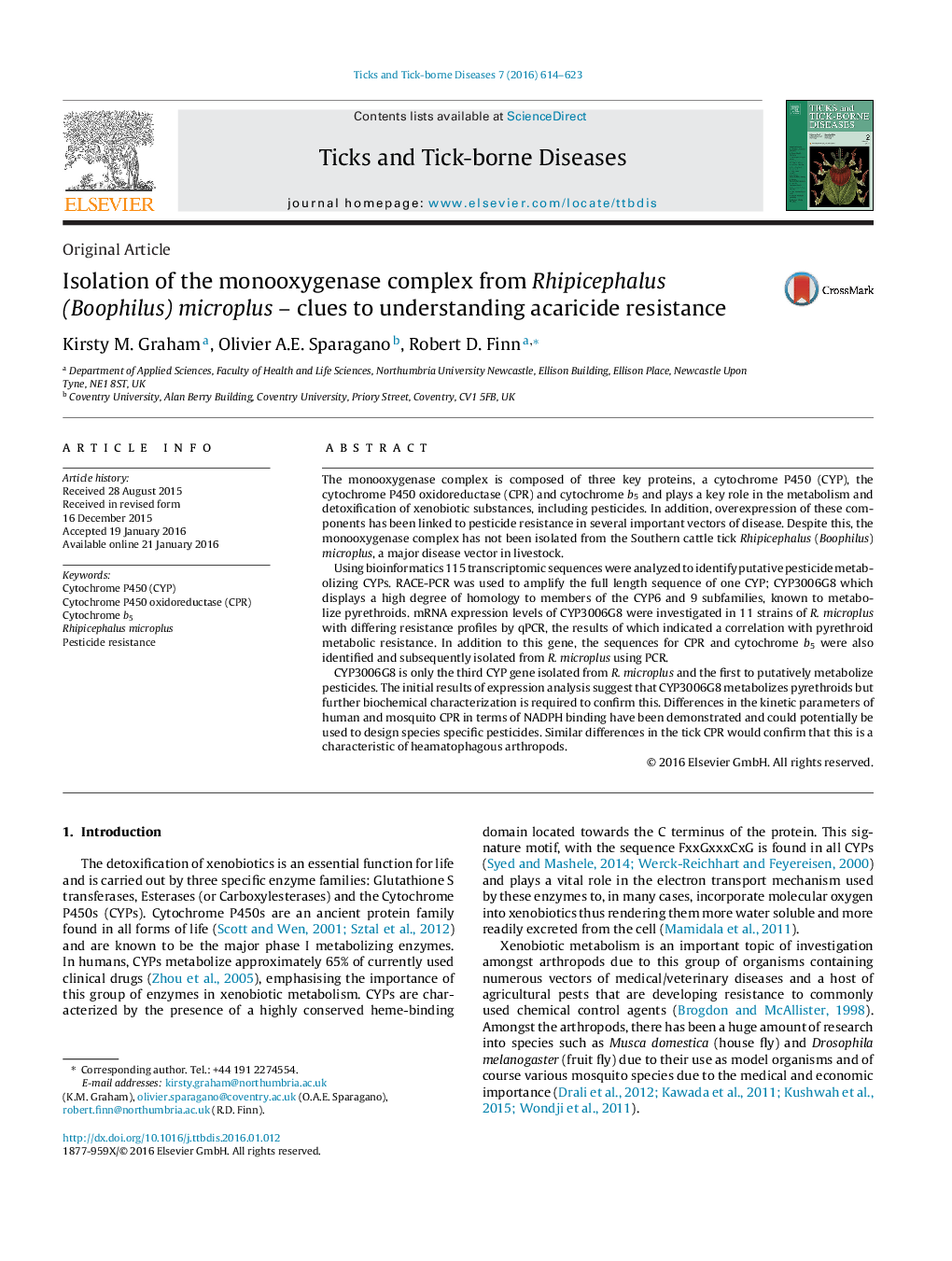| Article ID | Journal | Published Year | Pages | File Type |
|---|---|---|---|---|
| 5806997 | Ticks and Tick-borne Diseases | 2016 | 10 Pages |
The monooxygenase complex is composed of three key proteins, a cytochrome P450 (CYP), the cytochrome P450 oxidoreductase (CPR) and cytochrome b5 and plays a key role in the metabolism and detoxification of xenobiotic substances, including pesticides. In addition, overexpression of these components has been linked to pesticide resistance in several important vectors of disease. Despite this, the monooxygenase complex has not been isolated from the Southern cattle tick Rhipicephalus (Boophilus) microplus, a major disease vector in livestock.Using bioinformatics 115 transcriptomic sequences were analyzed to identify putative pesticide metabolizing CYPs. RACE-PCR was used to amplify the full length sequence of one CYP; CYP3006G8 which displays a high degree of homology to members of the CYP6 and 9 subfamilies, known to metabolize pyrethroids. mRNA expression levels of CYP3006G8 were investigated in 11 strains of R. microplus with differing resistance profiles by qPCR, the results of which indicated a correlation with pyrethroid metabolic resistance. In addition to this gene, the sequences for CPR and cytochrome b5 were also identified and subsequently isolated from R. microplus using PCR.CYP3006G8 is only the third CYP gene isolated from R. microplus and the first to putatively metabolize pesticides. The initial results of expression analysis suggest that CYP3006G8 metabolizes pyrethroids but further biochemical characterization is required to confirm this. Differences in the kinetic parameters of human and mosquito CPR in terms of NADPH binding have been demonstrated and could potentially be used to design species specific pesticides. Similar differences in the tick CPR would confirm that this is a characteristic of heamatophagous arthropods.
